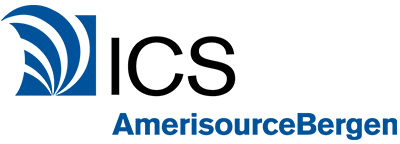
The Food Drug Administration (FDA) recently introduced a 12-month stabilization period, from November 2023 to November 2024, for the pharmaceutical industry to become compliant with the Drug Supply Chain Security Act (DSCSA).
In a recent virtual roundtable exploring how the pharma industry can adhere to new serialization requirements, Jeff Primeau, vice-president of ICS, stressed that it should continue with its efforts despite the extended deadline.
“From our perspective, the regulatory deadline remains 27 November 2023, so we have not stopped or delayed any of our efforts, in the same way that our customers haven’t,” said Primeau.
“The stabilization period has been introduced to give the industry ample time to ensure compliance, but manufacturers should continue with their serialization journey. While some medicines may not be serialized or aggregated, we can still sell them and deliver them to patients.”
Serialization complexities
From a manufacturer’s perspective, one of the key challenges in becoming compliant surrounds the ongoing connectivity and engagement of trading partners, said Jeffery Bragar, senior manager of commercial supply chain at Ferring Pharmaceuticals.
“At Ferring, if a product was shipped out, but due to an operator error it was not serialized, the quality department cannot approve it,” he said.
“The trading partner will place that product in a quarantine status, and it will not be saleable. During investigations to understand how the error occurred, there is constant communication between the manufacturer and third-party logistics (3PLs).”
Tracie Sasaki, director of operations at ICS, explained why the ability to have serialized data is important from a distributer’s perspective: “On our inbound receipt of products, if the data is not serialized there will be a delay – either at the receiving dock or at a staging area until the issue is resolved.
“It will cause a backlog, meaning we will be unable to distribute the product as needed. It is important to have pallet tags available, so we can scan the product when it’s on the dock.
“On the outbound side, one of the challenges that we see is the placement of the 2D barcode on the product packaging, so being able to scan that easily is also important.”
Integration with EDI is key
In the serialization process, electronic data interchange (EDI) plays a key role in sending out advanced shipping notifications (ASNs), shipping orders and confirmations.
Kristy Dinh, director of applications delivery at ICS, said: “Manufacturers who are integrated with EDI would need to start having early discussions about how to handle that between the enterprise resource planning (ERP) systems and third-party solutions, as integration and testing will take longer.”
Madison Leigh, manager of integrated solutions at ICS, believes integration is one of the biggest challenges facing the industry when it comes to serialization.
A lot of major wholesalers and dispensers are prepared for the new serialization requirements, whereas the smaller players might not have the abilities for integration and onboarding yet.
“We’ve worked with data providers, downstream customers and manufacturers, and although they all have the same goal, they’re different in the way they operate,” said Leigh.
“One of the difficulties is finding processes that can streamline onboarding and standardize areas that will be sufficient for everyone, rather than individually onboard and customize processes. It’s working out how we can be more efficient, and the lessons learned to improve future onboarding, and all that takes time.”
Ensuring patient safety
While regulatory compliance is vital in the pharma industry, serialization can help prevent counterfeit products entering the drug supply chain and increase patient safety.
Patient safety is at the heart of ensuring a secure and efficient pharma supply chain, said Bragar.
“The main purpose of the Drug Supply Chain Security Act (DSCSA), enacted in 2013, is to protect consumers from exposure to counterfeit, stolen and otherwise harmful products. It can help detect dangerous products in the supply chain.
“While previously, a lot number and expiration date would feature on a product, we are now seeing a product-specific global trade identification number attached to products. The serial number is specific to that exact consumer-usable package.
“At every step of the supply chain there is an electronic product code, and we can go through electronic files and trace these numbers for the protection of the consumer.”
How 3PLs can support manufacturers
As the industry prepares to meet new requirements, 3PLs can help establish a robust serialization strategy during the early stages of drug development.
According to Ryan Majewski, associate director of US commercial supply chain at Krystal Biotech, the 3PL partnership is a key stage of the launch process for any product.
“To work through potential scenarios and customize processes, being able to establish connectivity between a third-party serialization vendor and a 3PL, and making sure those connections are streamlined is important to the serialization process,” he said.
“From the initial scan all the way down to the Electronic Product Code Information Services (EPCIS) helped us establish our serialization channel and ensure it would operate smoothly once our product went live.”
Primeau explained it was important to have the right processes and system features in place to support manufacturers.
“3PLs need to be able to support manufacturers through their journey when things don’t go as planned; for example, if a shipment is received and there is no serial data with it,” he said.
“Having efficient processes in place and being able to react to unexpected events – I foresee this happening for the next couple of years. And the industry needs to be able to adapt and understand if the event is an exception or something that needs to be planned for.”
Aligning master data
The new requirements mean that 3PLs must verify the authenticity of received serialized products, including checking the unique product identifier and transaction history of every product, which is a significant operational challenge.
According to Leigh, to ensure the serialization process goes smoothly, as well as managing serialized data, it is vital that 3PLs assess their master data and check it is aligned with their own systems and that of the manufacturer.
“3PLs need to identify whether the quantity of products matches up to what they were expecting. A key part of this is for 3PLs to assess the data they receive from CMOs and suppliers,” she said.
While the 3PL may have addressed any data issues, there could be other obstacles at the labelling stage.
“When we scan the barcode on the product it may be improperly encoded or may not match the data we hold. During the onboarding process these additional checks are vital for successful serialization,” Leigh noted.
To find out how to meet the latest US serialization requirements download the whitepaper below.


